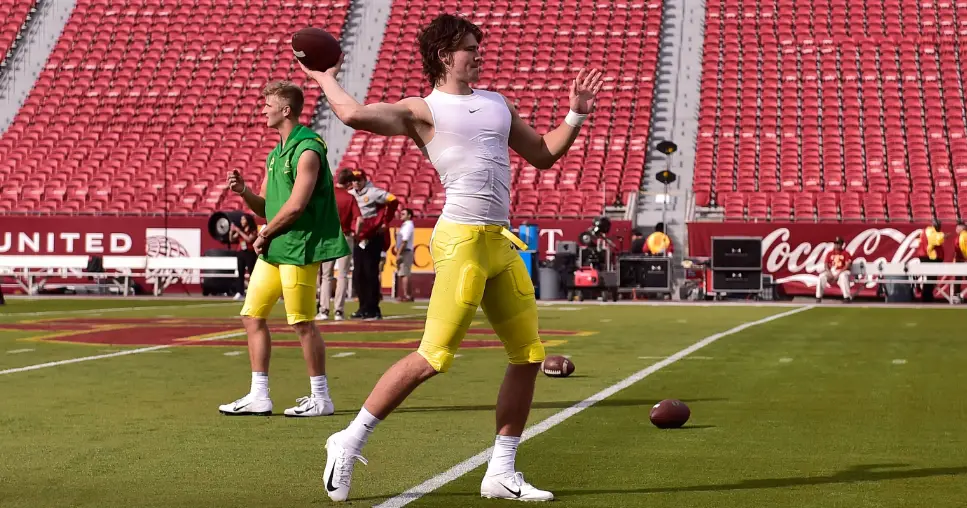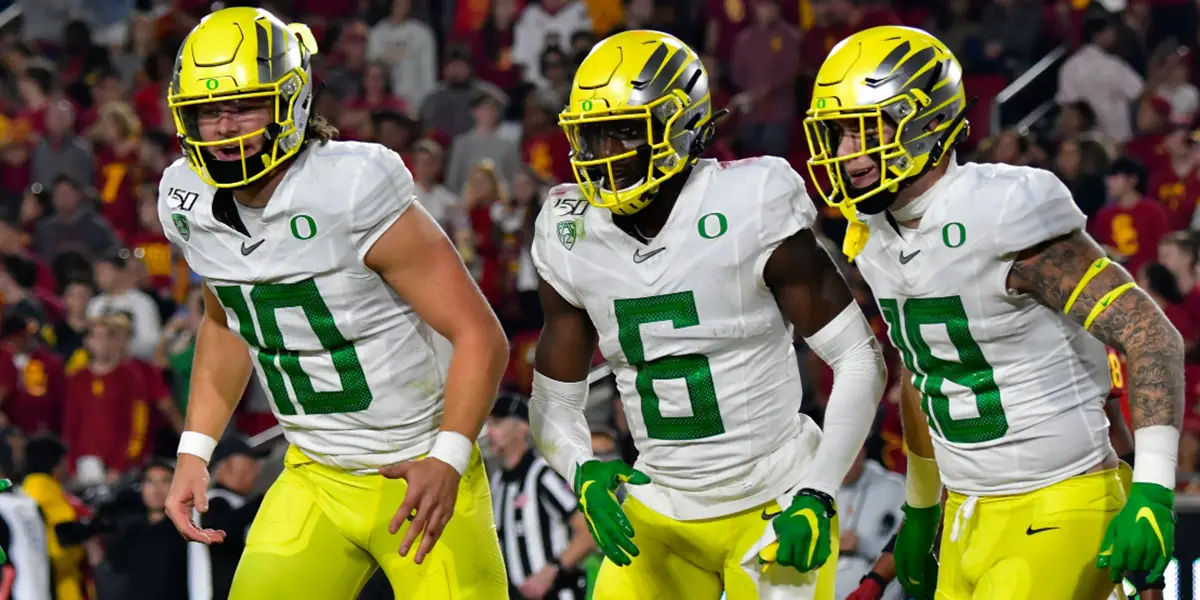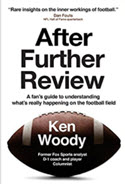Oregon’s second bye week of the season allowed Duck fans an opportunity to assess the improvement coach Mario Cristobal has established with his team and the potential for more excitement down the home stretch of the 2019 season.
The Pac-12 North Division race has been settled — Oregon is in, no matter the results of the last three games: Arizona, Arizona State and Oregon State. There are national ramifications: the College Football Playoffs and the Pac-12 championship game that should feature the two best teams in the conference, Oregon and Utah. But it could be a rematch between the Ducks and USC since the Trojans have the tiebreaker with Utah and could win their remaining games.
Oregon’s fans have been enthusiastic about the Duck defense, long a forgotten doormat at an institution that traditionally features offense. Defensive coordinator Andy Avalos established a low points-allowed threshold and a solid rush defense in the initial part of the season, but Washington and Washington State torched the Ducks for points and passing yards, pushing Oregon to the limit before succumbing.
A blowout of USC was, in the end, decisive; it was the second-most points Oregon has scored against the Trojans and a beautiful show for the LA high schoolers that are being recruited by Oregon, but were also visiting USC that particular weekend.
The strength of the Ducks defense is taking the ball away; currently they are ranked second in the country in creating turnovers and first in interceptions. In addition, Oregon leads the Pac-12 in sacks and, most importantly, is tenacious defending its end zone.
Oregon’s offense, so open to criticism the first third of the season, has become functional and more creative since Cristobal gave offensive coordinator and play caller Marcus Arroyo freedom to use speed and athleticism as a main course rather than an appetizer. The USC win was a great example of the ways the offense and defense have blossomed in the middle third of the schedule. It was also a great example of how ugly a lack of discipline can play on a national stage — 12 penalties for 157 yards and nine free first downs.
Quarterback Justin Herbert has become a master at running the RPO (run-pass option). Above, he puts the ball into running back Travis Dye’s (No. 26) mesh and keys the reaction of USC’s backside linebacker (No. 10), who comes up for what he thinks is a running play. Herbert takes the ball out and delivers a strike to Hunter Kampmoyer (No. 48), whose forte is blocking, not running pass routes.
Kampmoyer, at 6-4, 241, bumps off his defender and cuts inside. His big body shields him from the defensive back like a basketball player using his body to block out an opponent for a rebound.
After a sluggish start, Herbert threw darts, this one where only Kampmoyer could catch it, for a nine-yard gain. The big tight end has done an excellent job of replacing injured tight end Jacob Breeland as a powerful blocker.
The play above shows the advantages of misdirection: Herbert fakes a handoff to the left to Dye (No. 26) and then rolls to his right on a semi-bootleg move. Kampmoyer comes across the formation to the right as if he’s going to be a flat receiver but holds up and blocks. The offensive line has turn-blocked to the left and, with Kampmoyer’s block, affords perfect protection for Herbert to hit Jaylon Redd (No. 30) for a 19-yard gain.
Dye carried out his fake and influenced the zone flat defender, creating a gap behind him and in front of the deep coverage to open a hole for Jaylon Redd‘s reception. USC’ s defensive line looks tired and unathletic, probably a reason they called a timeout after this play to regain their wind.
USC’s freshman quarterback Kedon Slovis had a tough day, here (above) becoming the victim of DJ Johnson’s (No. 7) first sack as a Duck. USC’s offensive line sets up in good shape initially, but the left tackle loses his man, and the center (No. 53) abandons his responsibility trying to help out his mates on the right, but ultimately helping no one.
Drayton Carlberg (No. 90) is the left defensive end who engages the offensive tackle and then cuts inside towards the center that should have been in the middle to stop him. Because the center is a no-show, Carlberg breaks free towards Slovis, who tries to get away but instead becomes a sack statistic for Johnson. This play will not make ‘SC’s offensive line’s highlight film.
Above, a personal foul nullifies an excellent job of defense on a pass into the corner of the end zone by Thomas Graham, Jr. (No. 4), who bodies the receiver out of bounds as the ball is coming down. Unfortunately, a personal foul was called on Isacc Slade-Matautia (No. 41) for knocking down a Trojan receiver who was innocently crossing through the zone Slade-Matautia was responsible for defending.
You could not tell by the color commentator, who was off-base in his knowledge of pass interference rules by earlier saying that safety Brady Breeze’s bump of a Trojan receiver was pass interference, that this call was a make up for that.
The NCAA football rules book clearly describes pass interference when bumping receivers downfield. If the ball has not been thrown yet and the receiver is in front of the defender, it is a run until it becomes a legal forward pass (“past the neutral zone”). Such was the case with the interception. However, Slade-Matautia’s hit on the defender was after the ball was thrown across the neutral zone and he was playing the man, unaware of when or where the ball was thrown.
Offensive coordinator Marcus Arroyo came out firing the second half, calling three straight passing plays to get Herbert in rhythm. This play (above), a quick screen to running back Darrien Felix (No. 22), shows the versatility of Oregon’s skill players. Felix is lined up as a wide receiver to the right, and in other situations, might have been motioned there before the snap. It was good to see Cristobal using Felix and the blazing speed he can add to the offense early in the quarter.
USC had some early success with this pass rush, sacking Herbert in the first quarter, but it happens here that Arroyo has called for a screen opposite the rush. When Felix catches the ball, there are eight Trojan defenders away from the ball. With wide receiver Johnny Johnson III doing an outstanding job of blocking the outside defender, four Duck offensive linemen pull to the right and form a convoy for Felix.
Right tackle Calvin Throckmorton (No. 54), guard Brady Aiello (No. 66), center Jake Hanson (No. 55) and guard Shane Lemieux (68) are in full stride, looking somewhat surprised to see so few Trojans at the point of attack. It is a beautiful sight to see all that beef under full sail looking for someone to knock down.
Duck coaches are going to have to adjust the technique of the center, who is so quick joining the screen, he does not get enough of a jolt to slow the blitzing rusher who ended up hitting Herbert below the knees as he was throwing. Herbert was 10-of-12 pass attempts in the second half, but with the franchise quarterback on the ground after this one, there was momentary panic.

Herbert was on fire against USC.
There are a number of surprises in the conference this year. Who could forecast what injuries could do to good football teams like Stanford, Arizona Sate, and California or the fall off of Colorado, Washington, WSU, Arizona and USC and the late developers in UCLA and Oregon State? The only two teams that are close to living up to their pre-season billing are Oregon and Utah.
The future is clear: continue to play better, with discipline. The prize is there for the taking. Turnovers, penalties and overly conservative football are the only things that can keep this season from being really special.
Coach Ken Woody
Eugene, OregonTop Photo by Eugene Johnson
Want to learn from Coach Woody in person? He will be analyzing the prior game each week this season at the 6th Street Grill in Eugene on Wednesdays from 6:00 to 7:30 PM with video analysis and opening it up for questions. Join him and learn more football! Charles Fischer

Phil Anderson, the FishDuck.com Volunteer editor for this article, is a trial lawyer in Bend Oregon.
Dan Fouts, NFL Hall of Fame, Oregon Ducks quarterback: “Entertaining and easy to understand.”
“Every Oregon fan should have a copy to learn from as I do.” Charles Fischer
Buy the book here to learn from Coach Woody, or give a gift of football, a great gift for the fan who wants to learn and enjoy more of the Duck (or whoever your favorite team is) football experience.
Ken Woody is a former Fox Sports football commentator who played defensive back, receiver and kicker for Oregon from 1966 to 1970. He coached college football for 18 years, including stints as an assistant coach at Oregon, Washington, Washington State and Utah State, and was head coach at Whitman College and Washington University-St. Louis. He writes x’s and o’s, a weekly column in the Register-Guard, RG online coverage of Duck football and is the author of “After Further Review—an inside look at what’s really happening on the football field.” Woody is on KUGN (590 am) 2:45 before kickoff and 30 minutes after each game with coaching and game analysis.
Related Articles:
Ducks, Cristobal Answer Nagging Questions: Are the Ducks for Real?
Ducks Hang on in a Rough Ride with Fresno State
Cristobal: "Time to Coach 'Em Up"
"For Real"-Finally, Cristobal Unleashes Herbert in the Red Rose Zone
Coach Woody Analysis: Run Game Evolution and Opportunistic Defense Stun Utes
Coach Woody Analysis: Ducks Need More than the Pistol to Beat Utah
“I learned football working under many great coaches, among them Len Casanova, Jerry Frei, John Robinson, Bruce Snyder, George Seifert,and Ron Stratten at the University of Oregon, Jim Owens at the University of Washington and Jim Walden at Washington State University. Most of my coaching experience was on the offensive side of the ball with quarterbacks, receivers and kickers although as a head coach I coached defensive backs, linebackers and offensive line.
I achieved my first goal of being the youngest head coach in college football at the age of 26 and throughout my career in coaching and outside of it, as a journalist and broadcaster, have experienced how exciting and gratifying it is teaching the game to others.”


